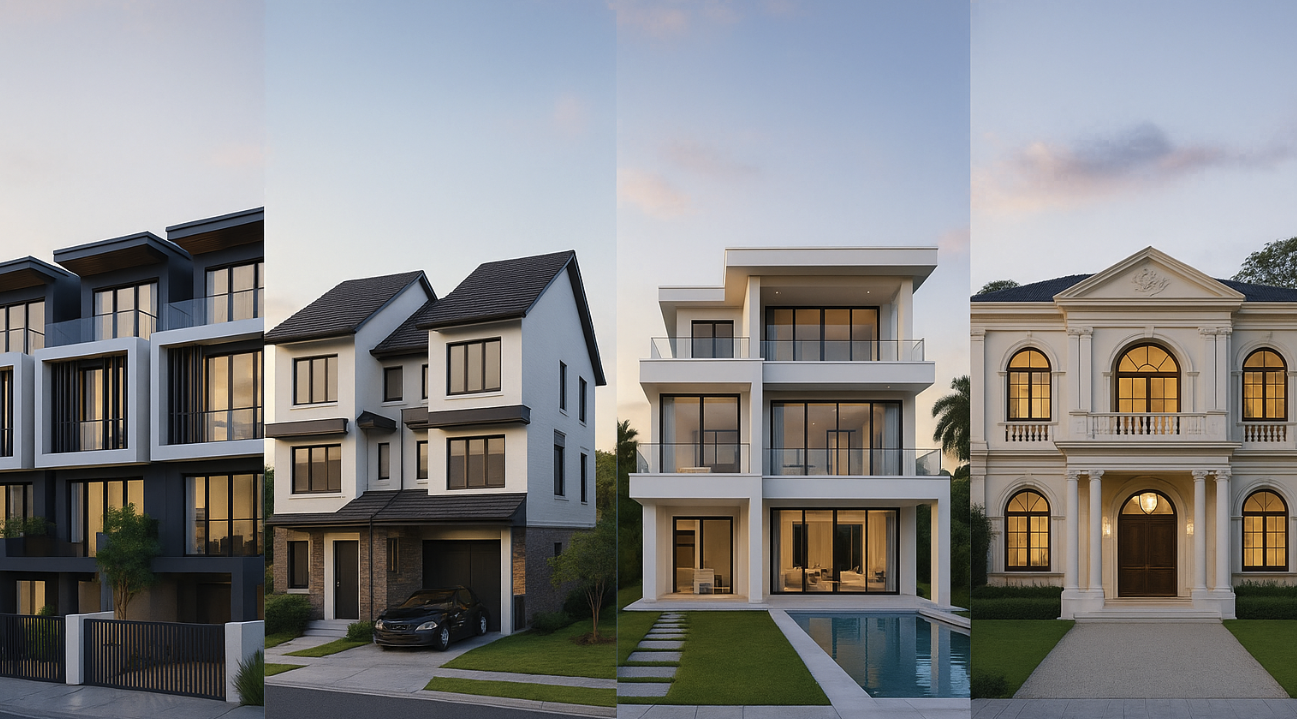Landed Property Types In Singapore: From Terrace To GCB (Explained Simply)
If you’ve started Googling “types of landed homes in Singapore,” you’re at a pretty meaningful fork in the road.
Buying land here isn’t just a financial decision, it’s often the result of years of work, patience, and planning. Most people never reach this point. So whether you’re moving up from a condo or looking to anchor your family’s next chapter, welcome. You’re in the right place.
“Landed property” is a broad label.
An inter-terrace home in Serangoon and a Good Class Bungalow (GCB) in Cluny technically both count as “landed” but they live in very different universes. That’s why it’s easy to get confused when someone says they’re “looking at a landed home.”
What kind? Where? What condition? What tier?
This guide breaks it down so whether you're a first-time buyer eyeing your first terrace, or you’re planning to park your capital (and your Ferrari) in a GCB, you’ll walk away with clarity.
And yes, you’ll notice some of the images here feel a little... extra. Long driveways. Infinity pools. Helicopter pads.
Not everything’s realistic. But hey , a little imagination doesn’t hurt, does it?
1. Inter-Terrace
Think of these as the “entry ticket” into landed living.
You’re sandwiched between two neighbours.
Front and back access only (no side windows).
Typically 1,600–2,200 sqft land size.
Most affordable landed option.
The appeal of an inter-terrace really lies in its affordability and accessibility. It offers buyers a rare chance to own land in land scarce Singapore. With a terrace house, you get a private car porch, no shared lifts or MCST fees and at a price point that’s often comparable to larger condos.
For many, it’s the first step out of shared living into full ownership, where you control your space, your renovations, and your lifestyle. It's modest on the outside, but for those coming from high-rise living, it’s a huge leap forward.
2. Corner Terrace
Like an inter-terrace, but with a little extra breathing room.
Sits at the end of the row.
More natural light and air thanks to the exposed side.
Often comes with a side garden or more parking space.
Commands a premium over inter-terrace units.
What makes a corner terrace more desirable than an inter-terrace is simple: light, air, and space. That exposed side wall isn’t just for show, it means more windows, better ventilation, and a home that feels less boxed in.
Many corner units also sit on larger plots, giving you room for a side garden, extra car park, or even a small pool if you get creative.
It’s the sweet spot for buyers who want a landed lifestyle upgrade without jumping all the way into semi-D territory.
3. Semi Detached
One step up — half of a pair of houses joined at the side.
Shares one common wall with a neighbour.
Side access and windows = better ventilation and layout flexibility.
Typically 2,500–3,500 sqft land.
Mid-tier landed with stronger resale demand.
A semi-detached home sits comfortably in the upper-middle tier of the landed prestige ladder, above terraces, but just below detached houses and GCBs. It’s often seen as a sweet spot for families who want the privacy and presence of a "real landed home" without crossing into full luxury territory.
In terms of price, freehold semi-Ds in districts like D19 or D28 typically start from around $3.5M–$5M, depending on land size, age, and proximity to schools or MRT.
In prime districts like Bukit Timah or East Coast, prices can start from $5M–$6M and climb well above $10M for newer, larger builds. Generally, they offer strong long-term value because of their scarcity and versatility making it equally appealing to both owner-occupiers and rebuilders.
4. Detached Homes
No shared walls. No compromises.
Fully freestanding house.
Maximum privacy, natural light, and design freedom.
Usually sits on land >4,000 sqft.
Prestige-level, often custom built or architect-designed.
If you’re considering a detached house, first of all, congratulations. You’re already playing in the top few percent of the market. These homes aren’t just rare; they’re a statement. No shared walls, full design freedom, and the kind of privacy that most people only dream of.
It’s the step up from a semi-D where you’re not just buying land — you’re buying peace, control, and long-term flexibility. On the prestige ladder, detached homes sit just below Good Class Bungalows, and depending on where you’re looking, prices typically start from $5M–$6M and can climb well into the $15M+ range in districts like Bukit Timah, East Coast, or Holland.
5. Good Class Bungalow
We know — this isn’t a real GCB in Singapore. The hills are too hilly, the house is too tall, and helipads aren’t exactly URA-friendly. But that’s the point. GCBs might not look like this yet, but the ambition? The scale? That part’s very real.
The crown jewel of Singapore real estate.
Must be located in a GCB-designated area.
Minimum 15,070 sqft (1,400 sqm) land.
Height restriction: 2 storeys only (to preserve the low-rise character).
Often priced upwards of $20M, with some crossing $100M.
A Good Class Bungalow (GCB) isn’t just a home it’s a power move in concrete and glass. With a minimum land size of 15,070 sqft and strict zoning that preserves its exclusivity, this is the pinnacle of landed living in Singapore.
You don’t stumble into a GCB, you ascend into it. These homes aren’t shy about their status: think private driveways longer than some roads, full-length lap pools, manicured lawns that need their own staff, and architecture that makes statements, not suggestions. Prices typically start from $20 million, with ultra-premium GCBs easily crossing the $100 million mark. This is where legacy lives and where luxury is anything but subtle.













